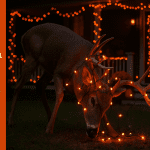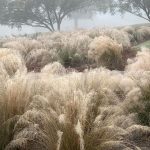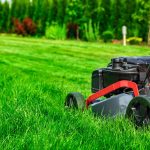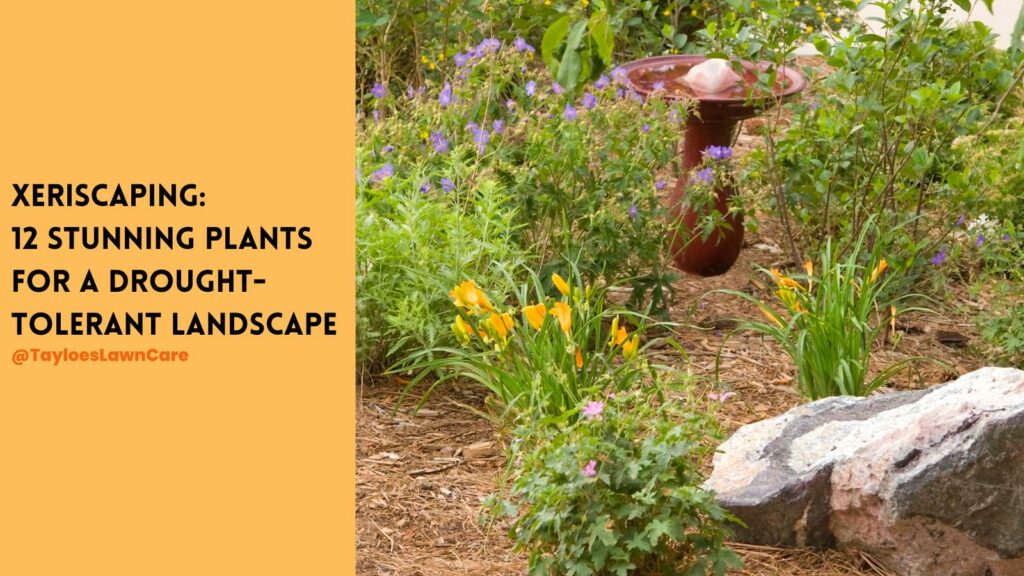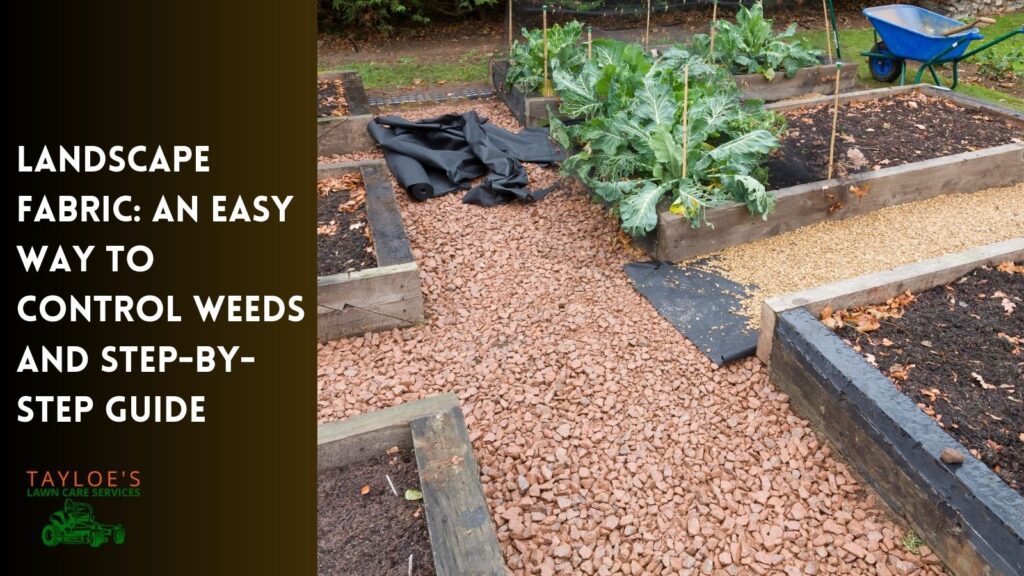Last Updated on: 14th January 2025, 06:20 am
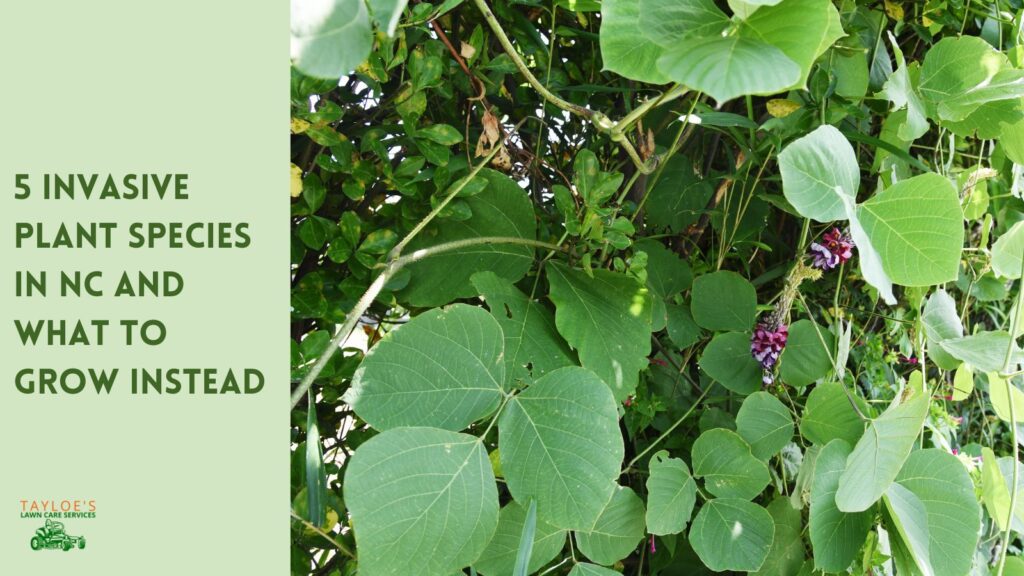
What are invasive species, and how do they cause economic or environmental harm?
Invasive species are non-native species that cause economic or environmental harm or harm to human health. They can be plants, animals, or microorganisms that outcompete native species for resources and habitat. Invasive species are often referred to as “exotic,” “alien,” “introduced,” or “non-native” species. Many invasive plants are accidentally introduced to new areas by humans through activities such as trade, travel, and gardening. Invasive species can also be native species that become harmful to their native environment after human alterations to their food web.
Impacts on Non-Native Ecosystems on Your Property
Invasive plant species can alter ecosystems and disrupt the balance of nature. They can outcompete native plants for resources and habitat, leading to displacement and potential extinction.
Invasive plants can also alter the food chain and damage native herbivores and wildlife populations. Non-native invasive plants can harm natural communities and displace native plants. They can introduce pathogens and reproduce quickly. Invasive species can impact public lands and roadsides significantly economically and environmentally.
Best Example of Non Native Plants Species in NC: Kudzu
An example of those plants that have taken over roadsides is kudzu.
Kudzu vine, often called the “vine that ate the South,” is an invasive plant known for its rapid growth and ability to smother trees and shrubs. Originally from Japan and China, kudzu was introduced to the United States in the late 1800s.
It was promoted at the 1876 Centennial Exposition in Philadelphia as a great plant for erosion control and livestock fodder. In the 1930s and 1940s, farmers in the South were encouraged to plant kudzu to combat soil erosion, especially during the Dust Bowl era.
However, the plant thrived too well in the warm, humid climate of North Carolina and other southern states, quickly spreading out of control. Today, kudzu covers millions of acres, posing a significant challenge to managing and harming agriculture and native ecosystems.
Threats of Invasive Plant Species
Invasive plant species have common characteristics that make them aggressive and difficult to control. They can grow in many conditions and thrive in high-nutrient conditions. Invasive plants have rapid growth and reproduction rates, allowing them to colonize new areas quickly.
They can also exploit and colonize disturbed property, making them difficult to eradicate. Many invasive plants can produce large amounts of seeds, allowing them to spread quickly and take over agriculture spaces and public lands.
How Invasive Plant Species Spread
Invasive plant species can spread through human activities such as global trade, travel, and gardening. They can also be spread through natural means such as wind, water, and animals. Invasive plants can be introduced to new areas through contaminated soil, water, and equipment.
Global trade and human transport have greatly increased the invasion rate, scale, and geographic range. Invasive species can also be spread through seeds in the wildlife trade.
Economic and Environmental Consequences
Invasive plant species can have significant economic impacts on agriculture, forestry, and tourism. They can also have environmental impacts on natural resources, including water and soil quality. Invasive species can harm native wildlife populations and alter ecosystems.
The economic and environmental consequences of invasive species can be long-lasting and difficult to reverse. Invasive species can also have social impacts on human health and well-being.
Predicting and Preventing Invasive Plant Species
Predicting and preventing invasive plant species requires a proactive approach. It involves identifying high-risk species and pathways of introduction. Preventing invasive species requires cooperation and coordination among governments, organizations, and individuals.
Early detection and rapid response are critical to preventing the spread of invasive species. Education and awareness are also key to preventing invasive species.
Control and Eradication Methods
Control and eradication methods for invasive plant species include physical removal, chemical removal, and biological control.
Physical removal involves manually removing invasive plants from the environment. In other words, you pull them like weeds and dispose of them in a plastic bag to prevent them from growing roots in a new location.
Chemical control refers to using herbicides to kill invasive plants. For instance, you may spray a retail chemicals from the local garden center to kill the plant or hire a professional chemical applicator to help you eliminate the invasives. After the treatment, you pull up and discard the plant parts and select native plants to replace the invasives.
Biological control involves using natural enemies to control invasive plant populations. For instance, you can plant robust native species that will overtake the invasives and outcompete for nutrients and water.
Role of Government and Organizations
Governments and organizations are critical in preventing and controlling invasive plant species. They can develop policies and regulations to prevent the introduction and spread of invasive species. Governments and organizations can also provide education and outreach to the public. They can also provide funding and resources for invasive species management. The United States Forest Service and other organizations have developed invasive species programs to address the issue.
Importance of Native Species Conservation
Native species conservation is critical to maintaining healthy ecosystems. Native plants provide habitat and food for native wildlife, and native species are also important for maintaining ecosystem services such as pollination and pest control. Conserving native species requires protecting and restoring natural habitats, promoting sustainable land-use practices, and reducing human impact on the environment.
What Humans Can Do to Help
Being aware of the issue can help prevent the spread of invasive plant species. You can learn to identify invasive plant species and report sightings to authorities or eradicate them from your yard. Besides that, you might participate in local conservation efforts and volunteer for invasive species management projects. You can also choose native plants for your garden. Finally, you might offer your support organizations that work on invasive species management.
Invasive Plants to Avoid Growing in Gardens (And What Native Plants to Grow Instead
Now that we’ve covered how invasive plants can spread pathogens, disease, and destroy wild habitats, let’s look at several invasive plants we often see around the community as we provide lawn care services. Don’t worry – we’ll not merely tell you what seeds and plants lead to environmental harm; we will also be sure you’re introduced to the native plants that can replace them.
Invasive Plants List #1 – Heavenly bamboo (Nandina domestica)
Also known as Nandina domestica, Heavenly Bamboo is an invasive plant to avoid in North Carolina. Although it’s commonly used in landscaping for its attractive foliage and red berries, heavenly bamboo can spread aggressively and displace native plants.
The berries are also toxic to birds, making them harmful to local wildlife. It’s best to consider native alternatives to maintain a healthy and balanced garden ecosystem.
What Native Plants to Grow Instead?
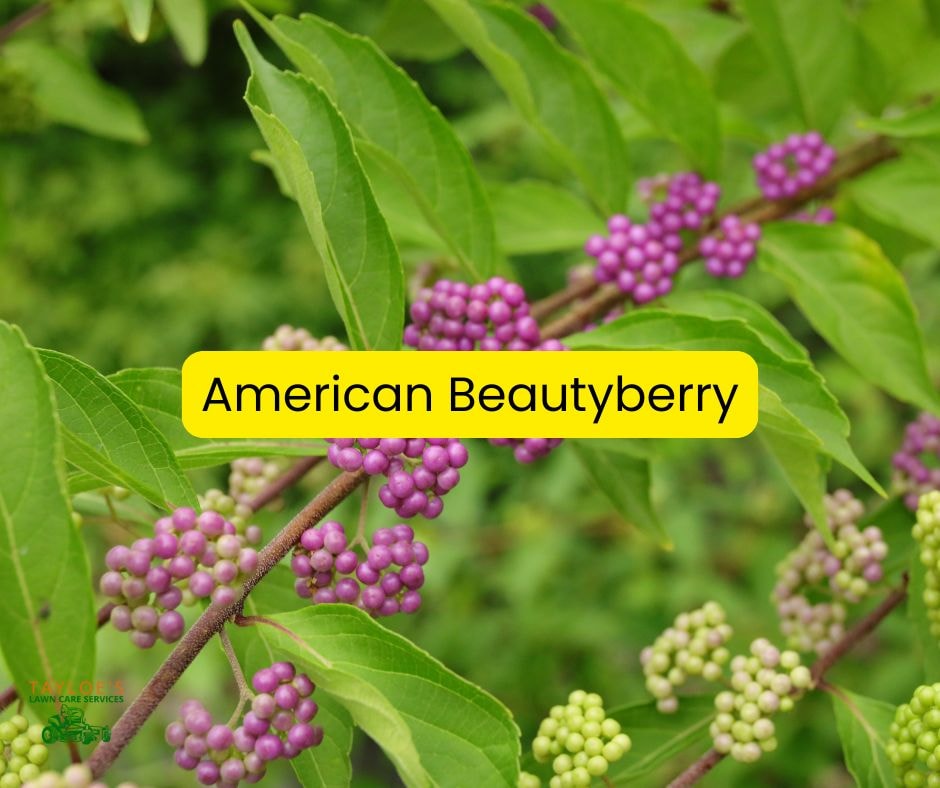
Instead of Heavenly Bamboo, consider the American Beautyberry (Callicarpa americana). This native species shrub features vibrant purple berries that attract birds and other wildlife. Its attractive foliage provides visual interest throughout the growing season. American Beautyberry is well-suited to the climate of North Carolina and helps support local ecosystems.
Invasive Plants List #2 – Garlic mustard (Alliaria petiolata)
Garlic mustard (Alliaria petiolata) is an invasive biennial herb native to Europe and Asia. It was introduced to North America in the 19th century, likely for culinary and medicinal purposes. Its heart-shaped, toothed leaves and small white flowers make the plant recognizable. In its first year, garlic mustard forms a rosette of leaves close to the ground, and in the second year, it grows tall stems with clusters of flowers. It has a distinct garlic smell when crushed. Garlic mustard spreads rapidly and can leave your yard and spread to NC forests, out-competing native plants and disrupting local ecosystems after establishment. It is particularly problematic because it produces chemicals that inhibit the growth of surrounding plants, making it difficult to control once established.
What Native Plants to Grow Instead?
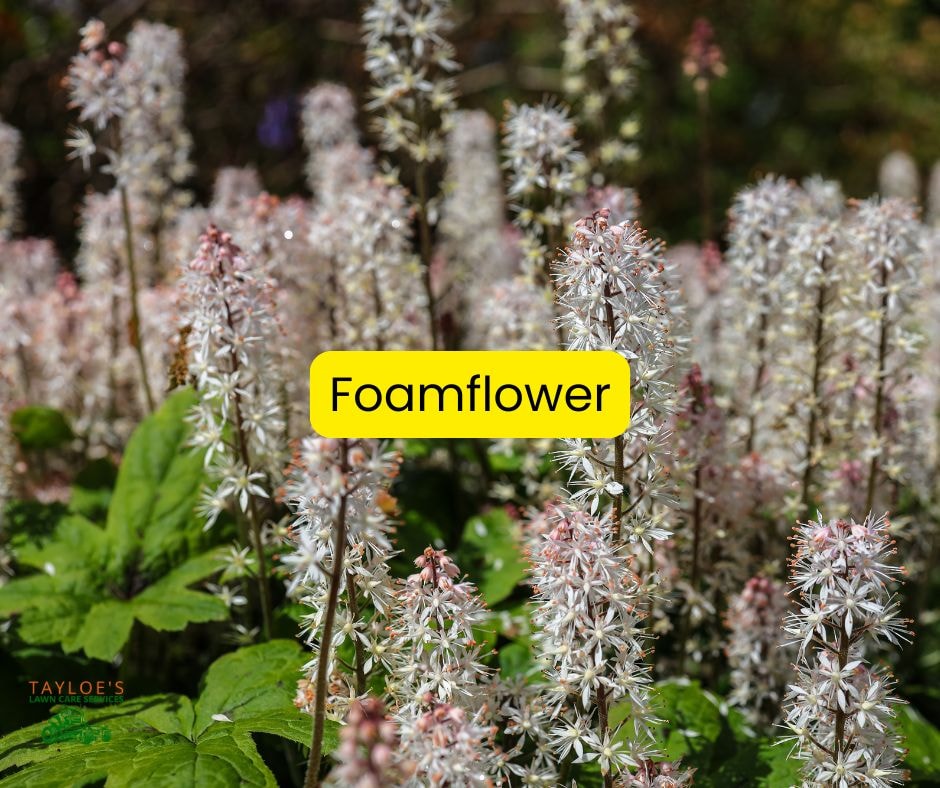
Foamflower (Tiarella cordifolia) is a delightful native plant that is up for consideration! It makes an excellent ground cover for shaded gardens in North Carolina. It features attractive lobed leaves and delicate spikes of white or pinkish flowers that bloom in spring, adding a touch of elegance to your garden. Foamflower thrives in moist, well-drained soil and is perfect for woodland gardens or shaded borders. Its low-maintenance nature and resistance to pests make it an ideal choice for gardeners looking to replace invasive species like garlic mustard while supporting local ecosystems.
Invasive Plants List #3 – Mimosa (Albizia julibrissin)
Mimosa (Albizia julibrissin), also known as the silk tree, is an invasive species in North Carolina known for its feathery pink flowers and fern-like leaves. It was originally introduced as an ornamental plant from Asia but quickly spread beyond cultivated areas.
Mimosa thrives in most soil types and can rapidly colonize local natural habitats, outcompeting native vegetation. Its seeds are easily dispersed by wind and water, allowing it to spread quickly. The dense canopy formed by Mimosa trees can shade out native plants. Additionally, the tree is susceptible to vascular wilt disease, which can impact nearby plants.
What Native Plants to Grow Instead?
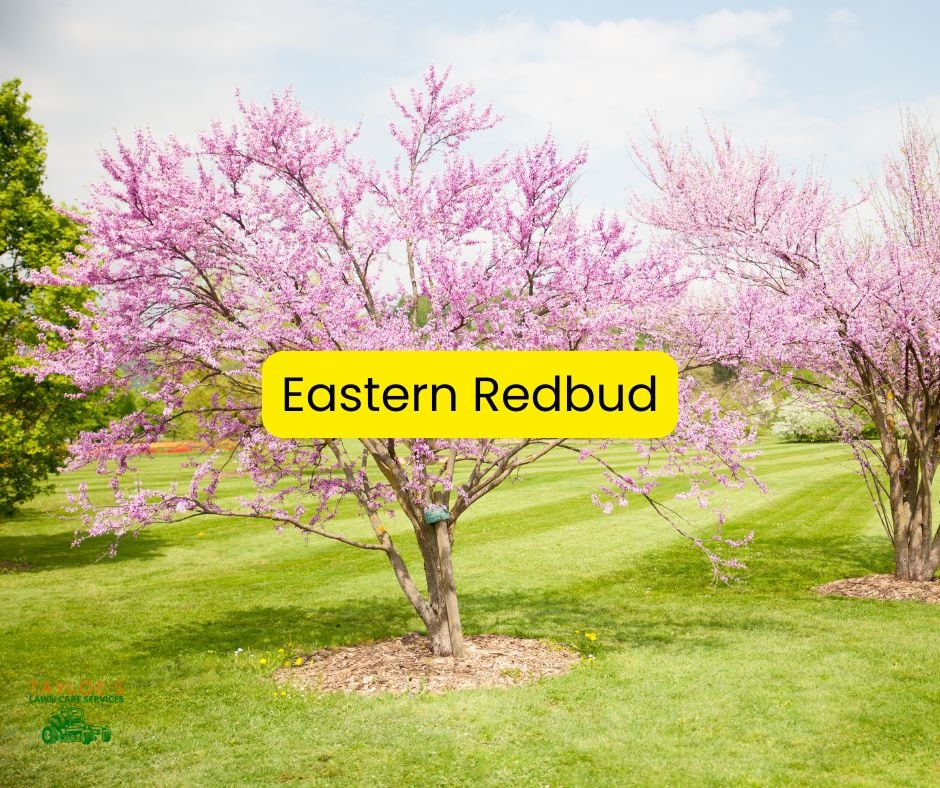
A suitable replacement for Mimosa in the North Carolina climate is the Eastern Redbud (Cercis canadensis). This native tree is known for its stunning display of pink to purple flowers that bloom in early spring, providing early-season nectar for pollinators. Eastern Redbud adapts to almost all local soil conditions and can thrive in full sun and partial shade.
Its heart-shaped leaves and graceful branching structure add aesthetic appeal to gardens and landscapes. Planting Eastern Redbud supports local wildlife, including pollinator insects like bees and butterflies, and helps maintain the ecosystem by providing habitat and food sources for native species.
Invasive Plants List #4 – Japanese Knotweed (Fallopia japonica)
Japanese Knotweed (Fallopia japonica) is an aggressively invasive plant that poses significant challenges in North Carolina. It was originally introduced as an ornamental plant from East Asia but quickly spread due to its robust growth and resilience. Japanese Knotweed can grow up to 10 feet tall and form dense thickets that outcompete native plants for light, water, and nutrients. This weakens nearby plants and makes them more likely to have diseases.
Its extensive root system can damage infrastructure, including roads, foundations, and flood defenses. These alien invasives rapidly through seed dispersal and root fragments, making it difficult to control once established in the wild. Its presence severely disrupts local ecosystems and reduces biodiversity.
What Native Plants to Add Instead?
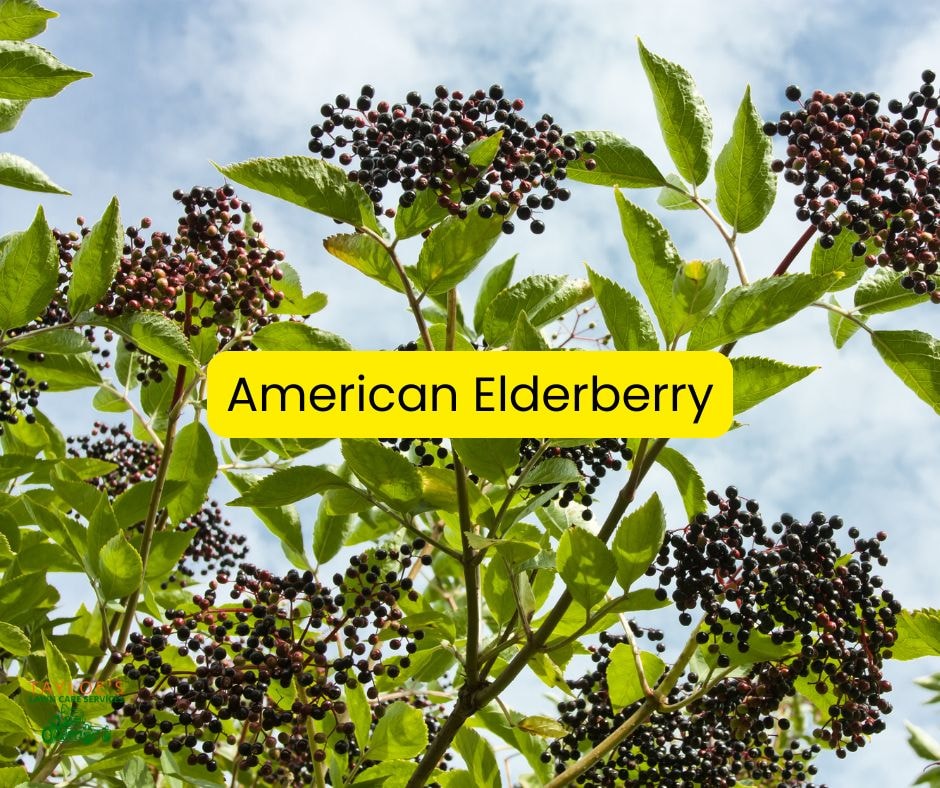
In the North Carolina climate, the American elderberry (Sambucus canadensis) is a suitable replacement for Japanese Knotweed. This native shrub is well-suited to a variety of conditions, including wet soils and partial shade. American Elderberry produces clusters of small, white flowers in late spring, followed by dark purple berries in late summer. These berries are highly attractive to birds and beneficial insects. The berries can also be used to make jams, jellies, and wines.
Planting American Elderberry supports local wildlife and helps restore the natural balance of ecosystems, providing a sustainable and attractive alternative to invasive species like Japanese Knotweed.
Invasive Plants List #5 – Tree of Heaven (Ailanthus altissima)
Tree of Heaven is a highly invasive species in North Carolina, originally brought from China in the 18th century for ornamental purposes. Known for its rapid growth and ability to thrive in poor soil conditions, it quickly spreads and dominates disturbed areas, outcompeting native plants. Tree of Heaven releases allelopathic chemicals into the soil, which inhibit the growth of surrounding vegetation, further exacerbating its impact on animals and other plants. Once its bugun its prolific seed production, the vigorous root system makes it extremely difficult to eradicate, leading to significant damage.
What to Native Species to Plant Instead?
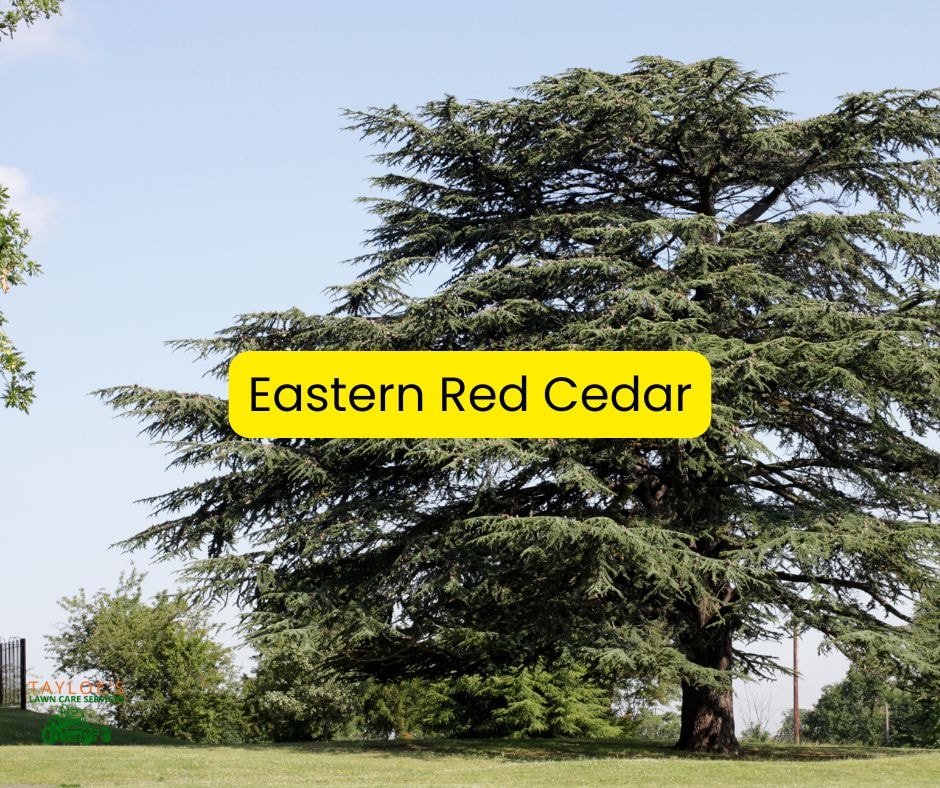
A suitable replacement for the Tree of Heaven in the North Carolina climate is the Eastern Red Cedar (Juniperus virginiana). This native evergreen tree is well-adapted to various soil types and conditions, including dry and rocky soils. Through its dense foliage and berry-like cones, Eastern Red Cedar provides year-round cover and food for wildlife, including birds and small mammals.
Its durable wood is also valued for its use in fencing, furniture, and cedar chests. Planting Eastern Red Cedar helps support native biodiversity and offers a resilient, low-maintenance alternative to the invasive Tree of Heaven.
Understanding Non-Native Species Is Important in Understanding What to Grow in Your Garden
Invasive plant species are a significant threat to native ecosystems and natural resources. Preventing and controlling invasive species requires a proactive and collaborative approach. We must work together to protect native species and maintain healthy ecosystems. We can make a difference by taking action and making sustainable choices.Let’s work together to prevent the spread of invasive plant species and protect our natural resources. Enjoy this gardening content? Be sure to follow Tayloe’s Lawn Care Services, LLC on Facebook.
Author Profile

- Randy Tayloe is the COO of Tayloe's Lawn Care Service, LLC. He is a certified custom applicator, recognized by the North Carolina Department of Agriculture Pesticide Division. A native of Bertie County, NC, and graduate of Bertie High School, he wants to beautify his home county - one yard at a time.
Latest entries
 FaunaOctober 3, 2025Fall decorations that endanger wildlife (and how to avoid the risks)
FaunaOctober 3, 2025Fall decorations that endanger wildlife (and how to avoid the risks) GardeningApril 1, 2025Fountain grasses add colorful foliage and movement
GardeningApril 1, 2025Fountain grasses add colorful foliage and movement GardeningMarch 21, 2025White cloud muhly grass growing guide
GardeningMarch 21, 2025White cloud muhly grass growing guide Lawn CareFebruary 25, 2025Should I mow every week?
Lawn CareFebruary 25, 2025Should I mow every week?


